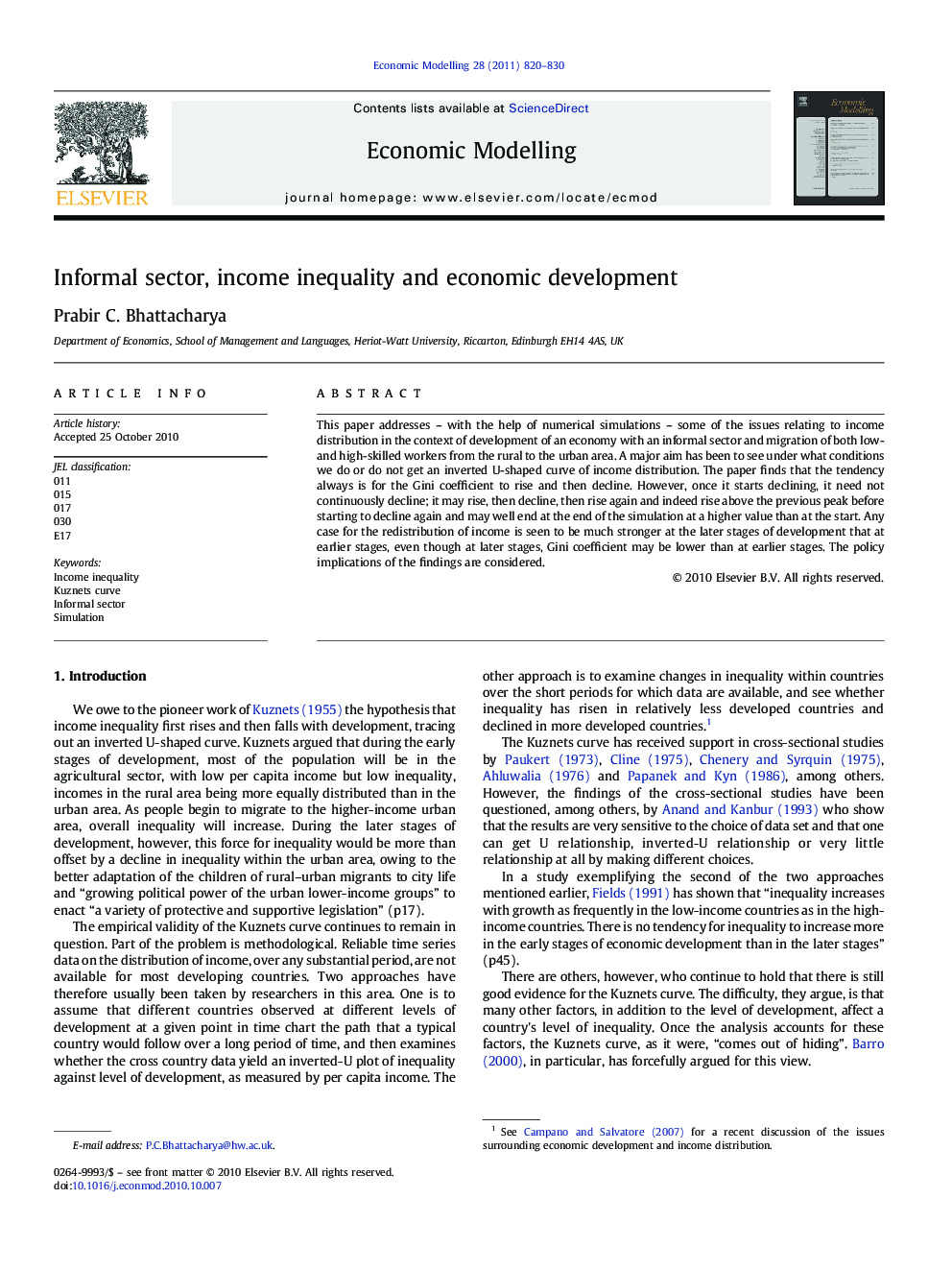| Article ID | Journal | Published Year | Pages | File Type |
|---|---|---|---|---|
| 5055616 | Economic Modelling | 2011 | 11 Pages |
This paper addresses - with the help of numerical simulations - some of the issues relating to income distribution in the context of development of an economy with an informal sector and migration of both low- and high-skilled workers from the rural to the urban area. A major aim has been to see under what conditions we do or do not get an inverted U-shaped curve of income distribution. The paper finds that the tendency always is for the Gini coefficient to rise and then decline. However, once it starts declining, it need not continuously decline; it may rise, then decline, then rise again and indeed rise above the previous peak before starting to decline again and may well end at the end of the simulation at a higher value than at the start. Any case for the redistribution of income is seen to be much stronger at the later stages of development that at earlier stages, even though at later stages, Gini coefficient may be lower than at earlier stages. The policy implications of the findings are considered.
